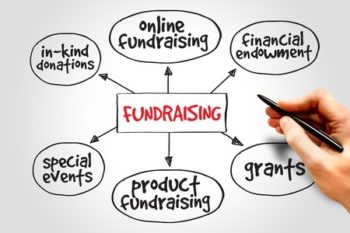Nonprofit Agency: Expert Solutions to Assistance Your Objective and Goals
Nonprofit Agency: Expert Solutions to Assistance Your Objective and Goals
Blog Article
The Role of Neighborhood Involvement in Nonprofit Fundraising: Structure Lasting Relationships for Lasting Assistance
Community interaction is increasingly identified as a vital element of successful not-for-profit fundraising. By fostering authentic connections with local stakeholders, organizations can cultivate count on and loyalty, which are important for sustainable support. However, the approaches and techniques employed to involve areas differ commonly, raising crucial inquiries about effectiveness and influence. What are the most effective techniques for cultivating these vital connections, and how can nonprofits measure their success in this sector? Understanding these dynamics might dramatically influence the future of fundraising initiatives and the general goal of nonprofit organizations.
Recognizing Community Engagement
Neighborhood involvement is an important element of successful nonprofit fundraising initiatives. It describes the approaches and tasks that organizations utilize to link with their local neighborhoods, cultivating relationships that are mutually valuable. Understanding community interaction involves identifying its multifaceted nature, which includes collaboration, outreach, and participation. Nonprofits must recognize vital stakeholders-- such as community members, local organizations, and various other organizations-- to develop efficient engagement techniques.
Effective community interaction is asserted on energetic listening and responsiveness to the needs and passions of the area. This procedure entails soliciting feedback, comprehending community characteristics, and making sure that the organization's goal aligns with neighborhood concerns. Involving the neighborhood can take different forms, including public conferences, volunteer chances, and collaboration campaigns, each created to urge participation and investment in the organization's goals.
Additionally, community interaction ought to be approached as a recurring discussion as opposed to an one-time initiative. By promoting an inclusive atmosphere where neighborhood voices are heard and valued, nonprofits can develop a solid foundation for future fundraising undertakings. Ultimately, a deep understanding of neighborhood involvement empowers organizations to develop authentic connections that improve their overall performance and sustainability.
Benefits of Solid Relationships
Solid connections created with community involvement yield countless benefits for not-for-profit fundraising initiatives. Most importantly, these connections foster trust and reputation, important parts in motivating benefactors to contribute. When possible supporters see a nonprofit actively associated with their neighborhood, they are more probable to rely on its mission and influence.

Furthermore, these connections help with effective communication. Nonprofits can take advantage of their links to share stories of influence, updates, and needs, guaranteeing that fans stay informed and involved. This open line of interaction not just strengthens bonds but also motivates referral promotion, increasing the not-for-profit's reach.
Finally, solid area ties can draw in new companions and sponsors. People and companies are more inclined to straighten with organizations that show significant area participation, offering extra resources and support that can substantially enhance fundraising capacities. Therefore, growing durable relationships with neighborhood involvement is essential to a nonprofit's long-term fundraising success.
Approaches for Efficient Engagement
Just how can nonprofits successfully involve their communities to improve fundraising initiatives? Creating targeted techniques is important for promoting meaningful connections. First, leveraging social networks systems allows companies to share their mission dynamically and interactively, reaching a wider target market. Normal updates, involving content, and calls-to-action can galvanize neighborhood passion and participation.
Second, holding area events, such as workshops, volunteer opportunities, or fundraising drives, promotes in try this person interaction, allowing nonprofits to display their impact and initiatives. These events not only raise funds yet additionally cultivate connections and allow neighborhood members to engage straight with the cause.
Third, implementing customized communication approaches can boost interaction. Tailoring messages to specific donor segments based on rate of interests and past payments cultivates a feeling of belonging and financial investment in the organization's objective.
Lastly, producing partnerships with local businesses and area leaders can enhance outreach initiatives. Collaborative initiatives can enhance presence and reliability, demonstrating a cumulative dedication to the area's wellness. By incorporating these methods, nonprofits can develop lasting connections that boost fundraising initiatives and drive sustainable assistance.
Determining Involvement Success
While involving the community is vital for effective nonprofit fundraising, determining the effectiveness of these engagement initiatives is just as vital. Developing clear metrics enables companies to analyze exactly how well they are attaching with their target market and attaining their fundraising objectives. Trick efficiency signs (KPIs) such as donor retention prices, volunteer participation degrees, and interaction on social media platforms offer concrete information for assessment.

Frequently assessing these metrics allows organizations to pivot their strategies when needed, making sure that area involvement remains straightened with their general objective. Additionally, sharing these outcomes with stakeholders cultivates transparency and constructs count on, encouraging further neighborhood involvement. Eventually, a durable dimension structure not just notifies future fundraising efforts however also reinforces the partnership in between the not-for-profit and its fans, preparing for lasting success.
Case Research Studies in Community Influence
Many study illustrate the extensive influence that neighborhood interaction can have on nonprofit fundraising success. One remarkable example is the "Food for Thought" campaign, where a local food financial institution partnered with institutions and organizations to host area dinners. These events not just elevated funds but likewise cultivated a sense of belonging among individuals, substantially raising contributor retention prices.
Another compelling situation is the "Green Spaces Job," which included local citizens in the revitalization of metropolitan parks. This campaign not only gathered financial backing from neighborhood services however likewise grew a volunteer base that added to continuous maintenance and programming. The sense of ownership and pride amongst community members translated into continual contributions.
In the world of arts, the "Art for All" campaign successfully involved regional artists and customers to develop joint view it now art installments, bring about increased exposure and contributions for a neighborhood arts not-for-profit.
These examples highlight that when nonprofits prioritize community participation, they can develop enduring partnerships that boost fundraising efforts, making certain lasting assistance and promoting a vivid neighborhood society. Such instances show that neighborhood engagement is not just a method yet a crucial column of nonprofit success.
Final Thought
In final thought, neighborhood involvement is important to the success of nonprofit fundraising initiatives. By fostering solid partnerships with local stakeholders, organizations improve count on and reliability, bring about enhanced contributor retention and loyalty. Carrying out efficient engagement strategies and determining their influence makes certain that fundraising consultant nonprofits can prosper and adapt. Inevitably, a durable foundation of neighborhood support not just enhances fundraising potential yet also cultivates a culture of partnership, vital for accomplishing long-term business goals and sustaining purposeful influence.
Nonprofits have to recognize crucial stakeholders-- such as community participants, local services, and various other companies-- to create effective involvement approaches.

In verdict, community interaction is essential to the success of nonprofit fundraising initiatives.
Report this page